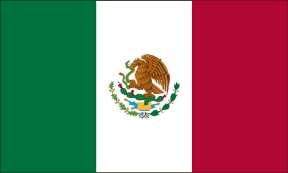By Daniel Nardini
 The Second French Empire’s design to conquer Mexico in 1862 was not just about imperial expansion. It had as much to do about economics as well. Before the U.S. Civil War (1861 to 1865), the southern states were one of the major producers of raw cotton in the world. The factory mills in both Great Britain and France received large quantities of southern American cotton and used it to manufacture clothes and other materials for their people as well as for export to their colonies. Because of this, American southern raw cotton was vital to their industries. American ships took raw cotton weekly to British and French sea ports from where the cotton was off-loaded by carriage and immediately processed in the factories. This had been the pattern between the United States and Great Britain and France for decades.
The Second French Empire’s design to conquer Mexico in 1862 was not just about imperial expansion. It had as much to do about economics as well. Before the U.S. Civil War (1861 to 1865), the southern states were one of the major producers of raw cotton in the world. The factory mills in both Great Britain and France received large quantities of southern American cotton and used it to manufacture clothes and other materials for their people as well as for export to their colonies. Because of this, American southern raw cotton was vital to their industries. American ships took raw cotton weekly to British and French sea ports from where the cotton was off-loaded by carriage and immediately processed in the factories. This had been the pattern between the United States and Great Britain and France for decades.
This all changed when 11 southern states seceded from the rest of the United States and proclaimed themselves a new nation known as the Confederate States of America. The Confederacy did not have much in the way of products that it could use for making money on the international market. It did however have cotton, and cotton was very much in demand in Europe and especially in Britain and France. U.S. President Abraham Lincoln, who wanted to retake the 11 southern states that had seceded, was not going to allow the Confederacy to trade with any part of the world. He had put in an effective blockade of all Confederate ports, stopping all trade between the Confederacy and the world. The Confederate states tried any means to get their cotton out for export.
Despite Confederacy’s best efforts, the United States largely prevented this trade from being successful. As a result, raw cotton went up over twice its value and thus created a crisis for Europe in being unable to get the raw cotton it needed. Great Britain largely solved this problem by importing cotton from Egypt. France had a real dilemma; where to get the cotton to help keep their empire going? This was one of the decisions in why the Second French Empire chose to take over Mexico in 1862. France not only wanted Mexico’s silver and gold as well as rich farmland, but with Mexico in their hands the French could more easily obtain raw cotton from the Confederacy because southern cotton was readily traded through the Mexican town of Matamoros. For French Emperor Napoleon III, the seizure of Mexico was a sound strategy especially when the United States was too busy fighting the Confederacy.
When the U.S. Civil War ended, the U.S. government took a dim view of the French holding on to Mexico. The Mexican forces under then Mexican President Benito Juarez, was beginning to receive massive U.S. aid to fight the French. Seeing that their hold on Mexico was in jeopardy, and fearing a rise of the military might of Prussia, Emperor Napoleon III withdrew French forces from Mexico in 1866. In the end, the French conquest of Mexico was not worth it for the French because shipments of southern cotton resumed and France no longer had a cotton problem. It is a supreme irony that one of the reasons for the French invasion of Mexico was for cotton.









